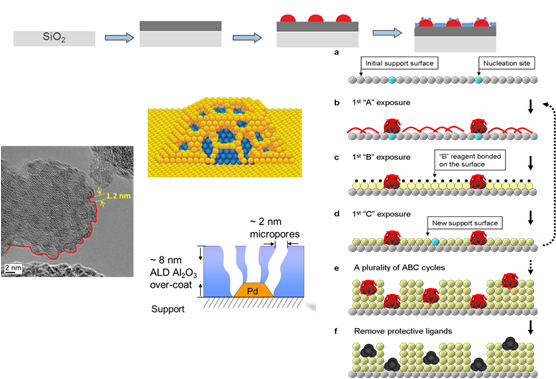Peter Stair
Peter Stair
Tue, Oct. 14, 2014, 4:30pm - 6:00pm
Frick Chemistry Laboratory, Taylor Auditorium
Host: Steve Bernasek
Synthesis of New Catalytic Systems by Atomic Layer Deposition
Atomic Layer Deposition (ALD) has enormous potential for the synthesis of advanced heterogeneous catalysts with control of composition and structure at the atomic scale. The ability of ALD to produce conformal oxide coatings on porous, high-surface area materials can provide completely new types of catalyst supports. At the same time ALD can achieve highly uniform catalytically active metal and oxide phases with (sub-) nanometer dimensions. This lecture will provide examples from our laboratory of ALD used to synthesize oxide supports, catalytic oxide overlayers, metal nanoparticles, and new porous structures. These materials have been characterized by SEM, XRF, ICP, UV-Vis absorption spectroscopy, Raman spectroscopy and evaluated for catalysis of oxidative and non-oxidative alkane dehydrogenation, selective photo-oxidation, and combustion. We have focused on the synthesis of supported metal nanoparticles and developed a procedure in which the metal and support materials are grown sequentially in each ALD cycle. This method makes possible the synthesis of exceptionally small particles, ca. 0.5 nm. Using additional ALD support layers at the conclusion of the growth, a process we call overcoating, the metal particles can be stabilized against sintering and leaching while still remaining active under harsh conditions in both gas and liquid phase reactions. Through proper annealing procedures the overcoating oxide develops porosity, thus ALD becomes a method for introducing and controlling pore structures. Finally, with templated ALD it is possible to prepare surface cavities, which we call nanobowls. These structures exhibit size selectivity, where large molecules are excluded from interacting with the catalyst material.

